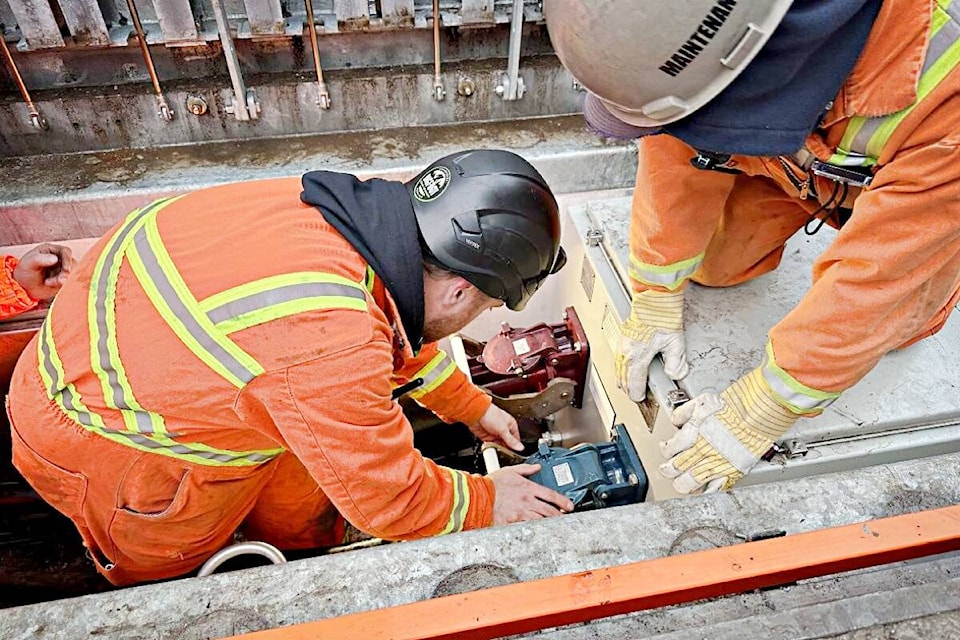A $7.2 million shore power project has enabled the Port of Prince Rupert to cut emissions by an equivalent of 6,500 passenger vehicles, the organization announced on Dec. 14.
Emission reduction measures, including expanded short power capacity at DP World’s Fairview Container Terminal were made possible with the installation of new electrical infrastructure at the terminals’ north berth and upgrades to the south berth.
The first ship to utilize the new north berth shore power system was the COSCO CSCL Summer on Dec. 12.
The partnership project between Prince Rupert Port Authority (PRPA), DP World and BC Hydro enables the full commissioning of the shore power system to allow ships at berth to shut down their main generators and rely on specially equipped dockside power connections while cargo is loaded and unloaded.
“Shore power demonstrates DP World’s commitment to a sustainable operation as we cut CO2 emissions globally by nearly 700,000 tonnes over the next five years,” said Maksim Mihic, CEO and general manager of DP World (Canada) Inc.
“In addition to the shortest ship crossing from Asia to North America and the greenest rail connection, this will position Prince Rupert as a leader in eco-friendly port operations. We want to thank our partners as we work together to reduce our impact on the environment,” Mihic said.
The ability to plug in large container vessels to shore power while at either terminal berth is forecast to reduce carbon emissions by almost 30,000 tonnes annually, as well as other air emissions related to vessel exhaust such as nitrogen oxides and particulates, from the local airshed. That is the equivalent of removing over 6,500 typical passenger vehicles from the road, the PRPA stated in a press release.
The shore power project aims to reduce the port’s greenhouse gas intensity by 30 percent from 2018 levels by the year 2030 and reach net-zero carbon emissions by 2050. Carbon emissions from marine sources are a key focus for the plan, the PRPA stated. Local shore power complements other international efforts to improve air quality and abate emissions, such as low-sulphur fuel regulations and developing new fuel and technological changes to ocean-going vessels.
“Shore power capacity is a critical component of the Port of Prince Rupert’s carbon reduction strategy and aligns with global efforts to transition the shipping and marine industries to renewable, clean energy sources,” said Shaun Stevenson, president and CEO of PRPA. “Offering this infrastructure at our port enables customers to make more sustainable choices about how they transport their cargo and the benefits it will have in reducing their overall carbon footprint.”
“The Prince Rupert Port Authority, DP World Prince Rupert, and BC Hydro contributions to the project were supported by $2.2 million in funding toward the $7.6 million project provided through Environment and Climate Change Canada’s Low Carbon Economy Challenge Fund and was coordinated through BMO Radicle,” the media statement read.
K-J Millar | Editor and Multimedia Journalist
Send K-J email
Like the The Northern View on Facebook
Follow us on Twitter
